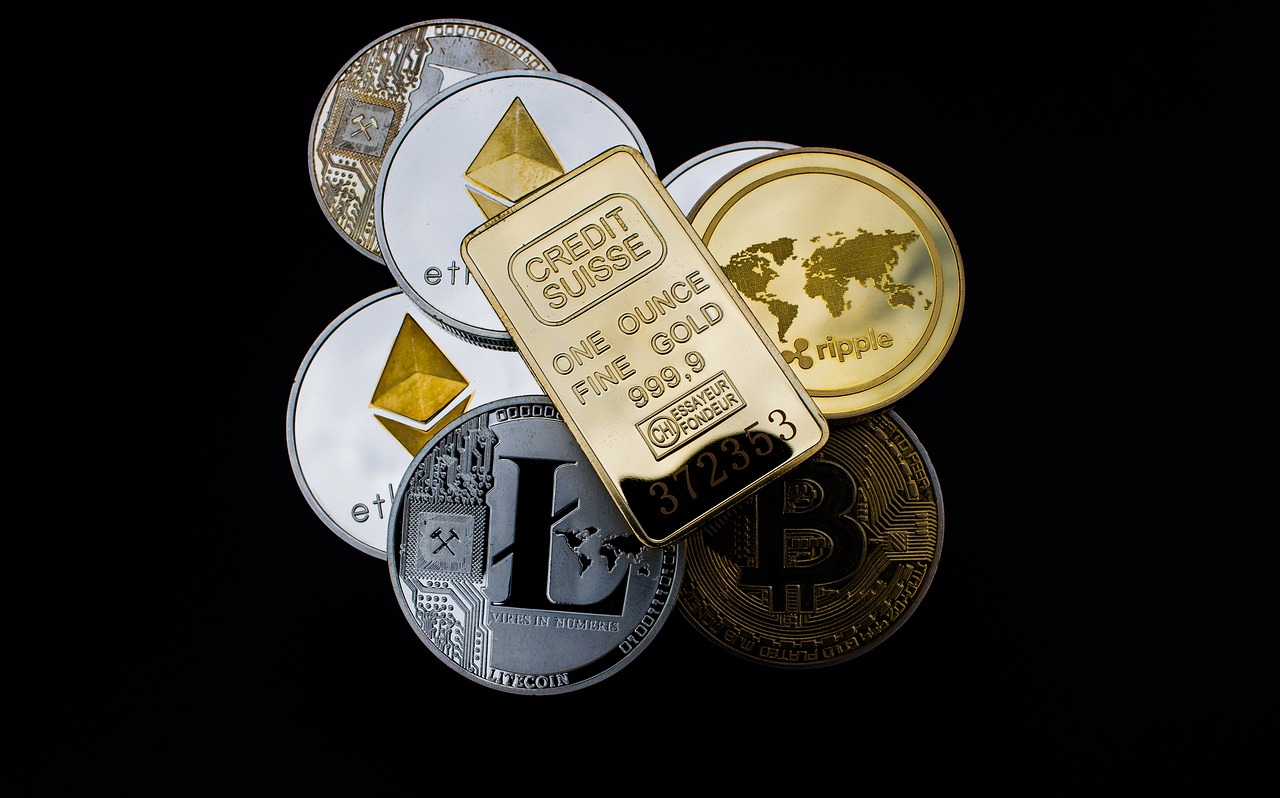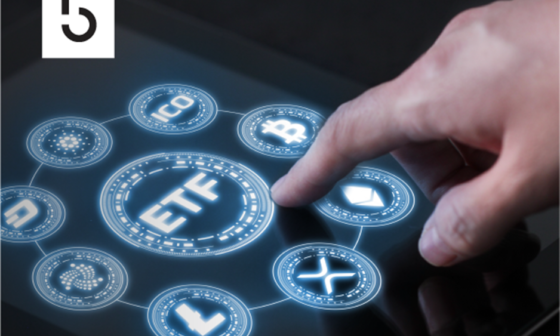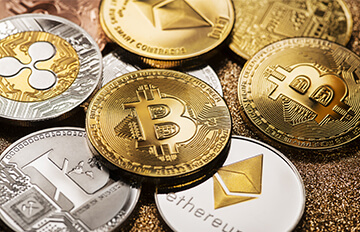Introduction
In an era where digitalization is redefining the way we live, work, and transact, the concept of digital assets stands at the forefront of this transformative wave. From cryptocurrencies to tokenized securities and digital collectibles, digital assets are shaping a new paradigm of value exchange in the digital age, unlike traditional assets.
As traditional boundaries blur and technology continues to advance, understanding the intricacies and implications of digital assets becomes crucial for individuals, businesses, and policymakers alike.
Digital assets have carved a niche for themselves in the vast landscape of finance. With the advent of technology, the financial sector has witnessed a paradigm shift, embracing digital assets as a new frontier.
In the vast realm of the digital era, the concept of “digital assets” stands out as a cornerstone. So, what’s the buzz about? Let’s unravel the mystery.

All About Digital Assets
Digital assets explained
Digital assets are digital representations of value that can be owned, stored, and exchanged electronically in digital format. They encompass a wide range of assets, including popular examples like Bitcoin, NFTs, tokenized securities, digital art, and more. While, Physical assets have a physical presence and can be seen, touched, and measured. Digital currency can be counted as a digital asset.
These assets utilize cryptographic techniques for secure transactions and are typically managed on decentralized platforms such as blockchain networks. Digital assets have gained prominence in various sectors, offering new avenues for investment, innovation, unique and varying needs, and financial inclusion.
The rise of digital assets has opened up new avenues for innovation and growth in finance. They offer enhanced liquidity, transparency, and accessibility, reshaping traditional financial systems and services.
How Digital assets work?
Digital assets operate through digital platforms and technologies, leveraging cryptographic methods to secure and facilitate transactions. These assets, which can range from cryptocurrencies to digital tokens representing real-world assets, are typically stored and managed on decentralized systems like blockchain which require private keys to secure wallets.
Through a combination of encryption, distributed ledgers, and consensus mechanisms, digital assets enable secure, transparent, and efficient exchanges of value in the digital form, bypassing traditional intermediaries and offering new possibilities for ownership, investment, and innovation.
Smart contracts and blockchain technology are foundational elements that play a crucial role in the functionality and value proposition of digital asset resources, including NFTs and cryptocurrencies.
For example- Fidelity Digital Assets is a subsidiary of Fidelity Investments, one of the largest digital asset management in the world. Launched in 2018, Fidelity Digital Assets provides enterprise-grade custody and execution services for digital asset classes, primarily targeting institutional investors such as hedge funds, family offices, and financial advisors.
Cryptocurrency operates as a digital asset within decentralized networks, primarily based on blockchain. Transactions involving cryptocurrencies are recorded on a public ledger called the blockchain, which is maintained and verified by network participants known as miners as well as they verify transactions on the blockchain network.
NFTs, or Non-Fungible Tokens, can be referred to as digital assets due to their unique and indivisible nature on the blockchain. Unlike fungible tokens like cryptocurrencies, which are interchangeable and have equal value, NFTs are distinct digital assets that represent ownership or proof of authenticity of a specific item or piece of content, such as artwork, collectibles, or virtual real estate.
Examples of Digital assets
Digital asset types encompass a wide range of digital content, data, and tokens that hold value in various contexts. Here are some examples of digital assets:

Cryptocurrencies:
Digital currencies like Bitcoin, Ethereum, and Litecoin operate on blockchain networks. You can begin investing in the crypto market and manage your portfolio in the exchange wallet itself. While the crypto market is extremely volatile.
Non-Fungible Tokens (NFTs):
Unique digital tokens represent ownership or proof of authenticity of specific items such as artwork, collectibles, virtual real estate, and in-game assets.
Tokenized Securities:
Digital tokens represent ownership in real-world assets such as stocks, bonds, or real estate, traded on blockchain platforms.
Digital Art and Media:
Digital artworks, music, videos, and other digital media files that can be bought, sold, or licensed as digital assets.
Domain Names:
Digital addresses are used to identify websites on the internet, which can be considered as digital assets with potential value.
Intellectual Property:
Digital assets such as patents, copyrights, and trademarks that represent intangible creations or ideas.
Digital Collectibles:
Unique digital items or collectibles, often associated with games, sports, or entertainment, that hold value within specific communities or platforms.
Decentralized Applications (DApps):
Software applications built on blockchain platforms, are often associated with tokens or digital assets that provide utility or access within the application ecosystem.
Smart Contracts:
Self-executing contracts with terms and conditions are directly written into code, facilitating automated and programmable interactions on blockchain networks.
These examples illustrate the diverse and evolving nature of digital assets in the digital economy, representing a broad spectrum of value, utility, and innovation in various sectors and applications.
A History of Belief
The history of belief in digital assets, such as cryptocurrencies and NFTs, began with the introduction of Bitcoin in 2009, pioneering decentralized digital currencies built on blockchain technology.
The subsequent emergence of Ethereum in 2015 introduced smart contracts and enabled the tokenization of assets, fostering the development of decentralized applications (DApps) and the decentralized finance (DeFi) ecosystem.
The advent of Non-Fungible Tokens (NFTs) further expanded the concept of digital assets, facilitating the creation, ownership, and exchange of unique digital collectibles and assets, reflecting the evolving landscape of value and innovation in the digital economy.
Investing in Digital Assets: A New Frontier for Financial Institutions
In the rapidly evolving landscape of finance, investing in digital assets has emerged as a groundbreaking opportunity for financial institutions and dedicated businesses alike. At the core of this transformative shift is decentralized finance (DeFi), which leverages decentralized ledgers, such as blockchain technology, to facilitate transparent and secure transactions without the need for intermediaries. This decentralized ledger serves as a distributed database that maintains a continuously growing list of records, or blocks, linked and secured using cryptography.
Financial institutions are increasingly recognizing the potential of digital assets to diversify investment portfolios, offer innovative financial products, and tap into new markets. By harnessing the power of blockchain technology, these institutions can enhance operational efficiency, reduce transaction costs, and streamline processes like verifying transactions and managing documents.
Moreover, DeFi platforms enable clients to access a wide range of financial services, including lending, borrowing, and trading, directly from their digital wallets, fostering financial inclusion and democratizing access to capital markets.
As digital assets continue to reshape the financial industry, proactive engagement, strategic partnerships, and a forward-thinking approach will be key to unlocking the full potential of this disruptive technology for financial institutions and their clients.
The Impact of Digital Assets on Society
The proliferation of digital asset management is reshaping various aspects of society, from economics to culture.
- Economic Empowerment: Digital assets democratize access to financial services, allowing individuals interest to participate in global markets, invest in innovative projects, and secure their financial futures.
- Cultural Preservation: Digital assets play a crucial role in preserving and disseminating cultural heritage, from digital art collections to virtual museums, ensuring that cultural narratives are preserved for future generations.
FAQ’s
Why are digital assets important in business?
Digital assets play a vital role in shaping a brand’s identity, driving growth, and offering monetization opportunities for businesses.
What challenges are associated with digital assets?
Security concerns, legal complexities, and regulatory issues are some challenges associated with digital assets.
Can individuals also have digital assets?
Yes, individuals can have personal digital assets like photographs, music collections, and personal documents.
Conclusion
The emergence of digital assets and decentralized finance (DeFi) represents a paradigm shift in the financial industry, offering unprecedented opportunities for innovation, diversification, and inclusion.
As financial institutions and dedicated businesses navigate this evolving landscape, embracing blockchain technology and digital assets can foster operational efficiency, expand market reach, and create new avenues for client engagement.
By staying agile, informed, and proactive, institutions can harness the transformative power of digital assets to shape the future of finance, driving growth, resilience, and value creation in an increasingly interconnected and digital world.






